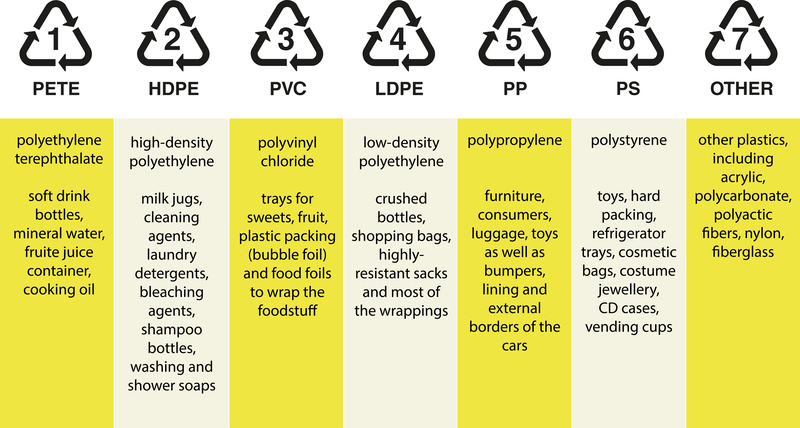Your Guide to Properly Throwing Away PPE Waste
The correct disposal of Personal Protective Equipment (PPE) waste has become an essential aspect of health and environmental responsibility globally. Whether you use masks, gloves, face shields, or gowns daily, knowing how to throw away PPE waste properly ensures you're not only protecting yourself but also the community and the planet. This comprehensive guide will walk you through all you need to know about handling, segregating, and disposing of PPE waste safely and sustainably.
Understanding PPE Waste: What It Is and Why It Matters
PPE, or Personal Protective Equipment, includes items such as:
- Face masks and respirators
- Disposable gloves
- Face shields and goggles
- Protective gowns, aprons, and shoe covers
During pandemics and in clinical settings, the use of these items increases exponentially, leading to significant PPE waste. Improper disposal of PPE waste not only threatens public health by potentially spreading contamination, but it also causes environmental havoc, especially when these plastics end up in water bodies or are incinerated inappropriately.
Key Reasons for Responsible PPE Waste Disposal
- Minimizing Health Risks: Used PPE can harbor harmful pathogens, endangering sanitation workers and others who come into contact with it.
- Protecting the Environment: PPE made from plastics can take hundreds of years to degrade, contributing to pollution and harming wildlife.
- Compliance With Regulations: Proper PPE disposal ensures compliance with local and international waste management guidelines.

Categories of PPE Waste
Before you throw away PPE waste, it's essential to understand its categories:
- Household PPE Waste: Masks, gloves, and face coverings used in non-medical settings.
- Clinical or Infectious PPE Waste: PPE contaminated with blood, body fluids, or other infectious materials, typically in healthcare facilities.
- Industrial PPE Waste: PPE used in manufacturing, construction, or laboratories exposed to chemicals or dangerous substances.
How to Properly Dispose of PPE Waste at Home
Most people encounter PPE waste in the form of disposable masks or gloves. Improper disposal--such as tossing them into recycling bins or littering--creates hazards. Here is your step-by-step guide to responsible home disposal:
Step 1: Remove PPE Carefully
- Wash your hands before touching your face or removing PPE.
- Avoid touching the outer surface of your mask or gloves when removing.
- For masks, use the straps; for gloves, peel them away from your hands inside out.
Step 2: Segregate Your PPE Waste
- Set aside a dedicated trash bag (preferably a small one) for used PPE items.
- Do Not Place PPE Waste in Recycling Bins. PPE is generally not recyclable through curbside programs because it contaminates other recyclables and poses health risks to workers.
Step 3: Secure and Label the Waste Bag
- When the bag is full, tie it securely to prevent leaks or accidental handling.
- Label the bag as PPE Waste if possible, to inform sanitation workers and avoid confusion with regular trash.
Step 4: Throw the Bag in the General Waste Bin
- Dispose of the sealed PPE waste bag in your general household trash, not compost or recycling.
- Immediately wash your hands with soap and water for at least 20 seconds after handling.
Special Considerations for Clinical and Industrial PPE Waste
PPE used in healthcare and industrial settings often demands more stringent disposal methods, following occupational health and safety protocols and environmental laws.
PPE Waste in Healthcare Facilities
- Segregate According to Risk: Infectious waste (contaminated with blood or bodily fluids) should be disposed of in color-coded, leak-proof biohazard bags, typically yellow or red.
- Use Designated Disposal Containers: Specialized bins, often with lids and clear labeling, are placed at points of PPE removal for staff convenience and safety.
- Follow Local Regulations: Adhere strictly to your local health authority's guidelines for infectious and hazardous waste disposal.
- Ensure Proper Treatment: Infectious PPE waste must be treated--autoclaved, incinerated, or otherwise rendered harmless--before final disposal.
PPE Waste in Industrial and Laboratory Environments
- Disposal Following Material Type: If PPE is contaminated with chemicals or hazardous materials, follow hazardous waste protocols, not general trash.
- Utilize Secure Containers: Use puncture-resistant, sealed containers for sharp objects or chemically contaminated PPE.
- Properly document the disposal process to remain compliant with occupational and environmental safety standards.
Environmental Impact: The Urgent Need for Proper PPE Disposal
The surge in single-use PPE due to global health emergencies has led to a massive increase in plastic waste. Masks, gloves, and face shields are made from materials like polypropylene, latex, and nylon, which take decades if not centuries to degrade. Improperly discarded PPE can:
- Block waterways and drainage systems, causing floods and environmental damage
- Entangle wildlife or be ingested by marine animals, resulting in injury or death
- Release toxic chemicals during inappropriate incineration
By committing to properly throwing away PPE waste, you are actively protecting both public health and our planet's fragile ecosystems.
Innovative Solutions and Sustainable Alternatives
To curb the problem of PPE waste, both individuals and organizations can take steps beyond just disposal:
- Use Reusable PPE Where Feasible: Cloth masks and face coverings, which can be washed and reused, offer a practical alternative for the general population.
- Explore Biodegradable PPE Products: Look for biodegradable or compostable masks and gloves made from materials like plant fibers, offered by some eco-friendly brands.
- Participate in PPE Recycling Initiatives: Some companies and municipalities operate specialized PPE recycling programs, especially for masks and gloves. Research local options in your community.
- Encourage Institutional Sustainability: Workplaces can implement PPE waste reduction strategies, such as providing bulk dispensers, reusable alternatives, and staff education.
What Not to Do When Disposing of PPE Waste
- Never throw PPE waste onto the street, in parks, or open areas --littered PPE not only endangers public health but also accumulates in waterways and oceans.
- Do not flush masks or gloves down the toilet; this can cause plumbing blockages and lead to pollution.
- Do not attempt backyard burning: Burning plastics at home without proper incineration equipment releases toxic chemicals that are hazardous to health and the environment.
- Do not mix PPE waste with recyclable materials--this contaminates otherwise clean recycling streams and puts workers at risk.
Guidelines for Institutions and Workplaces
For businesses, schools, and other institutions, ensuring proper PPE waste collection and disposal is crucial for the safety and well-being of staff, visitors, and cleaning personnel.
Best Practices for PPE Waste Management in Institutions
- Install clearly labeled PPE waste bins at entrances, exits, and common areas to make disposal convenient and safe.
- Provide training for staff on recognizing, handling, and disposing of PPE waste according to health and safety protocols.
- Work with licensed waste disposal firms to collect and properly dispose of large quantities of PPE waste, especially where biological contamination is possible.
- Monitor and audit waste streams to ensure PPE disposal compliance and to identify areas needing improvement.

Frequently Asked Questions About Disposing PPE Waste
Can used masks & gloves go into my recycling bin?
No. Do not place used masks, gloves, or other PPE in recycling. They must go in the general waste due to the risk of contamination and the inability of standard facilities to process them.
What should I do if I see PPE litter in public?
If you must pick it up, use gloves or a litter picker, and dispose of it in a sealed bag. Always wash your hands thoroughly afterward.
Are there PPE recycling programs?
Some local governments and private companies have initiated PPE waste recycling schemes, typically for commercial or high-volume users. Research your local options for drop-off locations or collection programs.
Is there a way to reduce my PPE waste?
Yes! Whenever safe and appropriate, choose reusable PPE, such as fabric masks, and always store and clean them according to guidelines. Only use disposable PPE when necessary.
Conclusion: A Shared Responsibility for a Cleaner Tomorrow
Properly throwing away PPE waste is a simple yet effective way to protect your health, the health of those around you, and our shared environment. With millions of PPE items being discarded every day worldwide, responsible disposal and the adoption of sustainable alternatives are more important than ever.
Remember: Always place used PPE in a dedicated garbage bag, never in recycling or compost. Secure the bag, wash your hands, and consider what alternatives you can adopt to reduce your environmental footprint.
Your daily decisions about PPE waste disposal matter. Let's work together to keep our communities and the earth safe, clean, and healthy!
